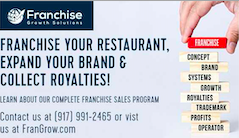Photo by Jessica Lewis on Unsplash
There are several reasons why shift scheduling is a critical part of managing your workforce. For one thing, if you have part-time employees who aren’t able to work every day that you need them, it’s vital that you have some system for organizing their schedules. In addition, consistency will help make things easier for everyone involved.
Managing Part-Time Employee Schedules
By Dom Hemingway
If you’re managing a part-time employee schedule, you know how important it is to be organized and prepared. Managing a part-time employee’s schedule can be tricky because you must keep your team member’s other priorities in mind and ensure that their work hours fit into those priorities accordingly. These priorities may include school, taking care of children or an elderly parent, and another part-time job. It’s essential that your employees can balance multiple aspects of their lives while still working for your company successfully!
Here are a few tips to consider:
Know Your Labor Needs In Advance
First, consider the business’s needs and how many employees you will need to cover the shifts. Next, consider how many shifts you need to cover each week and month (not just in specific time slots). Finally, be sure that all your available times are covered.
An excellent place to start is by creating standard templates for when employees will be working each week (e.g., every Monday afternoon). In addition, these templates should include what shifts are available and any special days off that might change weekly (such as holidays). Once set up, these templates let employees know their schedule via phone or other digital notification so they can plan accordingly!
Use A Scheduling Tool
A scheduling tool can help you organize your employees’ schedules, set up shift swaps, and more. There are numerous scheduling tools used by companies like Google, Red Bull, Spotify, and LinkedIn. Using A Scheduling Tool Is Simple. First, set up templates for days off and specific shifts (like the weekend). Next,use those templates as needed by dragging them onto the calendar view. Templates allow you to see your schedule at a glance so that you don’t have any surprises when it comes time for each person’s next shift. Include Shift Swaps. Shift swaps allow employees to trade shifts with each other. Swapping a shift is a great way to balance work and personal life, prevent burnout, and get the days off you want. If you have an employee self-scheduling system, it will also help avoid turnover by allowing employees to pick their schedules.
Managing Days Off
The first step in creating an employee schedule is to set up templates for each day off. You can do this by setting up a template that applies a specific day off for each employee. If you have more than one part-timer working simultaneously, ensure their days out are consistent, so they don’t conflict. Also, when setting up their days off, consider their work schedule and personal life—not only will this make things easier for them overall, but it’ll also ensure that they can attend family events or plan fun activities outside of work! Finally, if an employee is sick or needs time off during the week, consider how long they’ve been working before approving any requests. This flexibility will help ensure they get enough time away from work while still staying productive at home without having too much downtime.
Let Employees Select Their Shifts
It may be a good idea to allow employees to select their shifts. Self scheduling gives them the freedom to choose when they want to or can work, which can help them be more productive at work and happier overall. Many part-time employees also have multiple jobs and might need a schedule that works with another. For example, let’s say you have an employee who is also a freelance writer; he might need his schedule to include Friday off, so he has time to write articles for other publications. Allowing him to switch shifts with other employees in your organization makes it possible for him (and others) who may need this flexibility to have multiple jobs simultaneously! To ensure your part-time employees are scheduling themselves most efficiently, it’s important to know your needs before you begin.
Employee self-scheduling is a great way to reduce employee turnover and keep employees accountable for their schedules.
Employees pick their shifts based on availability and job needs with self-scheduling. This method also allows you to see how many hours each employee works, which can help you track attendance and make sure they’re adhering to policies regarding overtime or sick days.
Create Weekly Schedules At Least A Week In Advance
The weekly schedule prepared in advance is the best way to track employee hours and manage payroll. It also helps you plan by clearly showing the shifts to be covered according to sales and other projects.
Employees can quickly see how much time off they have next week, making planning life events easier (and more likely).
Managers can see what projects are due around the same time or when an employee will be out sick or on vacation. They can also use this information to choose who should help cover each other’s shifts if someone suddenly needs time off unexpectedly.
A Consistent Scheduling Process Is Critical
There are several reasons why shift scheduling is a critical part of managing your workforce. For one thing, if you have part-time employees who aren’t able to work every day that you need them, it’s vital that you have some system for organizing their schedules. In addition,consistency will help make things easier for everyone involved. For example, employees can plan their personal life around this schedule. In addition, employers can ensure that they always have enough employees working during each shift.You will also be in a better position to manage labor costs by scheduling team members in advance and according to projected sales for the week.
Additionally, if your company has full-time employees with varying schedules—such as those on-call or night shifts—it’s important to keep track of how many people you schedule during any given time. For example, suppose one employee misses two days in a row due to illness. In that case, it might be necessary for another coworker with flexible hours to cover those shifts instead, so nothing falls through the cracks!
Conclusion
Finally, an organized schedule will make things easier for everyone involved in ensuring there aren’t any scheduling conflicts within teams or departments because everything has been planned out ahead of time rather than being handled on an ad hoc basis.”
When managing part-time employees, it’s essential to consider their needs in advance. After all, they’ll be working with you regularly. Hence, you want them to feel comfortable and empowered in their work environment.






